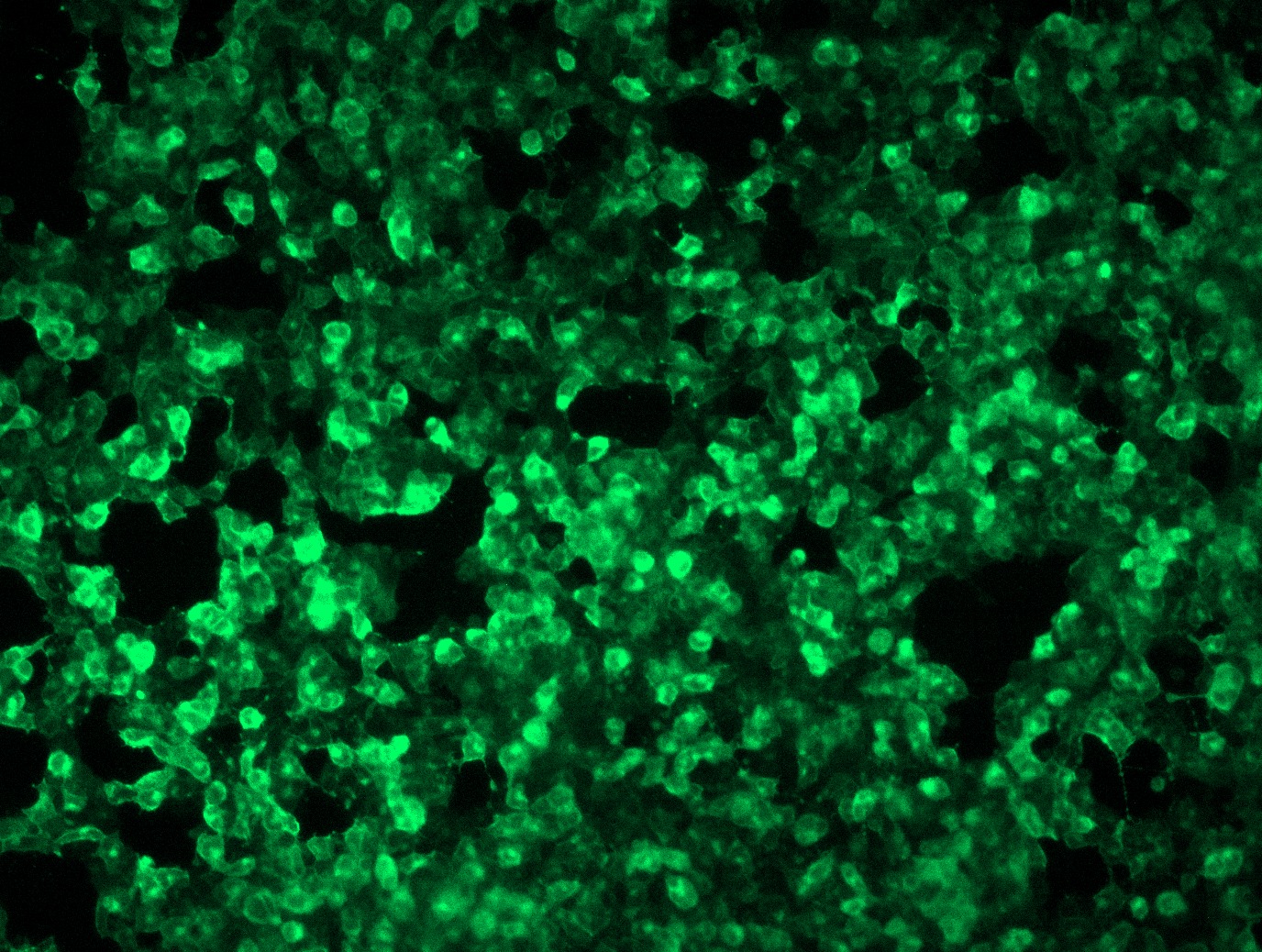PD-L1 (CD274) (NM_014143) Human Tagged ORF Clone Lentiviral Particle
CAT#: RC213071L3V
- LentiORF®
-

Lenti ORF particles, CD274 (Myc-DDK tagged) - Human CD274 molecule (CD274), 200ul, >10^7 TU/mL
Lentiviral Particles: DDK mGFP mGFP w/ Puro
AAV Particle: DDK
Buy this product and get 50% off on the Lenti RapidTiter kit. Use Code: Rapid50
USD 365.00
Specifications
| Product Data | |
| Type | Human Tagged ORF Clone Lentiviral Particle |
| Tag | Myc-DDK |
| Symbol | PD-L1 |
| Synonyms | B7-H; B7H1; hPD-L1; PD-L1; PDCD1L1; PDCD1LG1; PDL1 |
| Mammalian Cell Selection | Puromycin |
| Vector | pLenti-C-Myc-DDK-P2A-Puro |
| ACCN | NM_014143 |
| ORF Size | 870 bp |
| Sequence Data |
The ORF insert of this clone is exactly the same as(RC213071).
|
| OTI Disclaimer | The molecular sequence of this clone aligns with the gene accession number as a point of reference only. However, individual transcript sequences of the same gene can differ through naturally occurring variations (e.g. polymorphisms), each with its own valid existence. This clone is substantially in agreement with the reference, but a complete review of all prevailing variants is recommended prior to use. More info |
| OTI Annotation | This clone was engineered to express the complete ORF with an expression tag. Expression varies depending on the nature of the gene. |
| Reference Data | |
| RefSeq | NM_014143.2 |
| RefSeq Size | 1553 bp |
| RefSeq ORF | 873 bp |
| Locus ID | 29126 |
| UniProt ID | Q9NZQ7 |
| Cytogenetics | 9p24.1 |
| Domains | ig, IG |
| Protein Families | Druggable Genome, Transmembrane |
| Protein Pathways | Cell adhesion molecules (CAMs) |
| MW | 33.28 kDa |
| Gene Summary | This gene encodes an immune inhibitory receptor ligand that is expressed by hematopoietic and non-hematopoietic cells, such as T cells and B cells and various types of tumor cells. The encoded protein is a type I transmembrane protein that has immunoglobulin V-like and C-like domains. Interaction of this ligand with its receptor inhibits T-cell activation and cytokine production. During infection or inflammation of normal tissue, this interaction is important for preventing autoimmunity by maintaining homeostasis of the immune response. In tumor microenvironments, this interaction provides an immune escape for tumor cells through cytotoxic T-cell inactivation. Expression of this gene in tumor cells is considered to be prognostic in many types of human malignancies, including colon cancer and renal cell carcinoma. Alternative splicing results in multiple transcript variants. [provided by RefSeq, Sep 2015] |
Documents
| Product Manuals |
| FAQs |
| SDS |
Resources
{0} Product Review(s)
Be the first one to submit a review






























































































































































































































































 Germany
Germany
 Japan
Japan
 United Kingdom
United Kingdom
 China
China



